We’re pretty sure you’ve done your research about the best things to see in Dubrovnik but how about what to eat in Dubrovnik? In this guide, we’re taking you on a culinary journey across the distinct tastes of Dubrovnik.
A Quick Overview of Dubrovnik’s Local Cuisine
Although Croatia is a relatively small country, there are a lot of regional differences in its cuisine. At first, you might think you’ve stumbled upon a bizarre parallel universe of Italian food.
Inland and in the northern Istrian peninsula though, Croatian cuisine is defined by its Slavic roots, Hungarian neighbors, and the legacy of Ottoman occupation. Dubrovnik and the surrounding area have a great food scene and regional dishes that are quite their own.
Here’s what to eat in Dubrovnik while visiting Southern Dalmatia.
What To Eat in Dubrovnik & Around
Fish & Seafood Dishes
The bounty of the Adriatic Sea is to be found on restaurant menus in Dubrovnik and if you don’t usually eat a lot of fish because you can’t get it fresh enough, this is your chance to indulge.
Oysters
Visiting Dubrovnik and not trying an oyster is truly a sin. The oysters here aren’t just any oysters. These are oysters from Ston Bay, and of course, the best place to try them is the Ston area.
You can find oysters in most restaurants in Dubrovnik, but the ones from local restaurants in Ston come to the table directly from the sea – they are as fresh as you can get.
The best way to have them is raw on ice with a bit of lemon juice. If you are not a fan of raw food, some places can grill or fry them for you. But please, no dips or sauces like ketchup or mayo. That would be an even bigger sin than not having them at all.
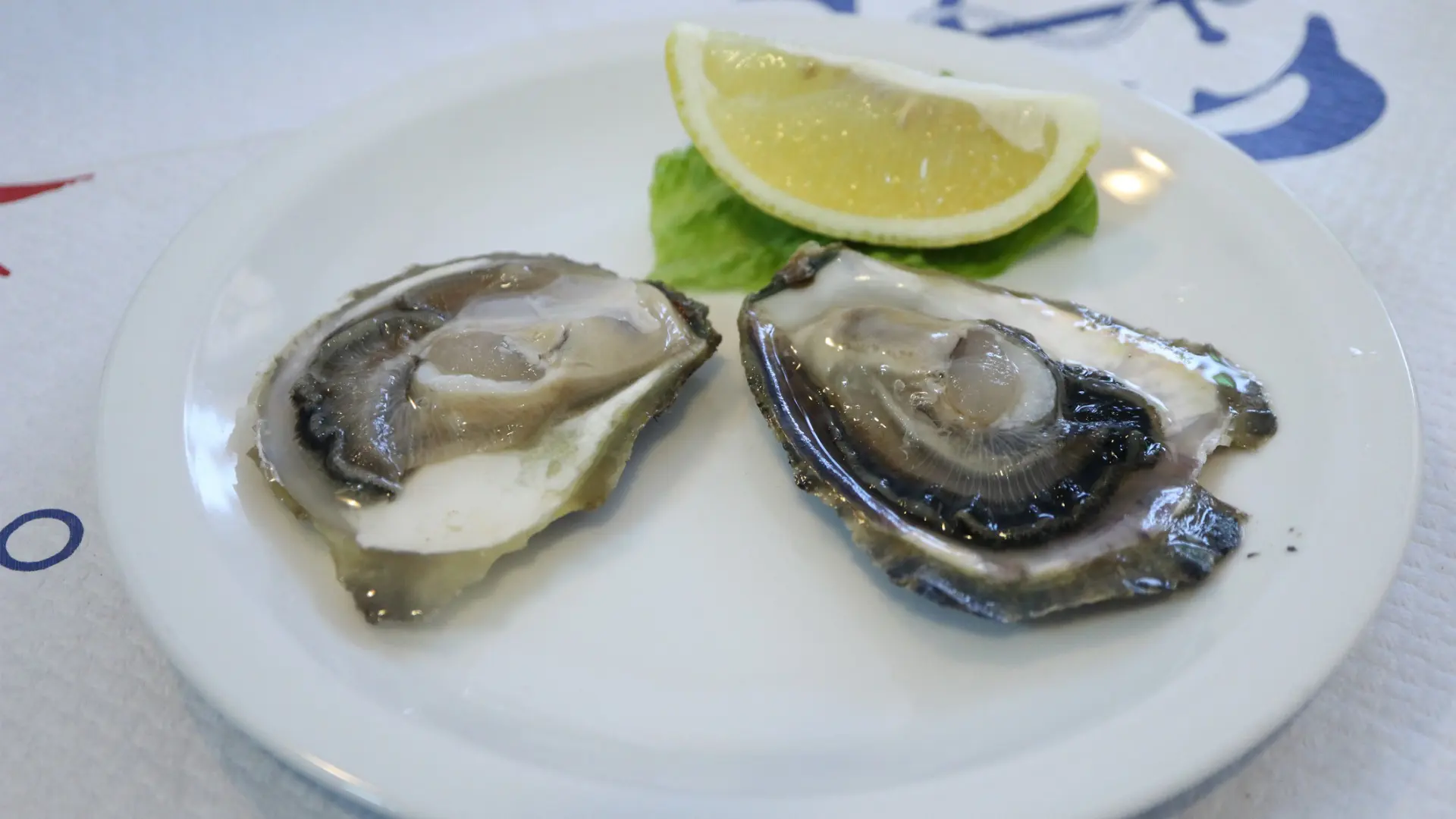
Neretvanski Brodet or Neretva Brodet
Brodet is a fish stew that is very popular in the entire Dalmatia region and in neighboring Montenegro, too. However, Brodet from the Neretva Valley is slightly different as it is made with frogs and eels. That’s right – frogs. Frog Brodet is more of an old-school Croatian delicacy, but people swear it is delicious.
If you try to take your mind off of what you’re actually eating for a second, you will enjoy it a lot. Besides the varying types of seafood or amphibians, the other main ingredients are plenty of onions, tomatoes, and chili peppers, so it is usually quite spicy. Brodet is traditionally served with polenta to soak up the leftover broth.
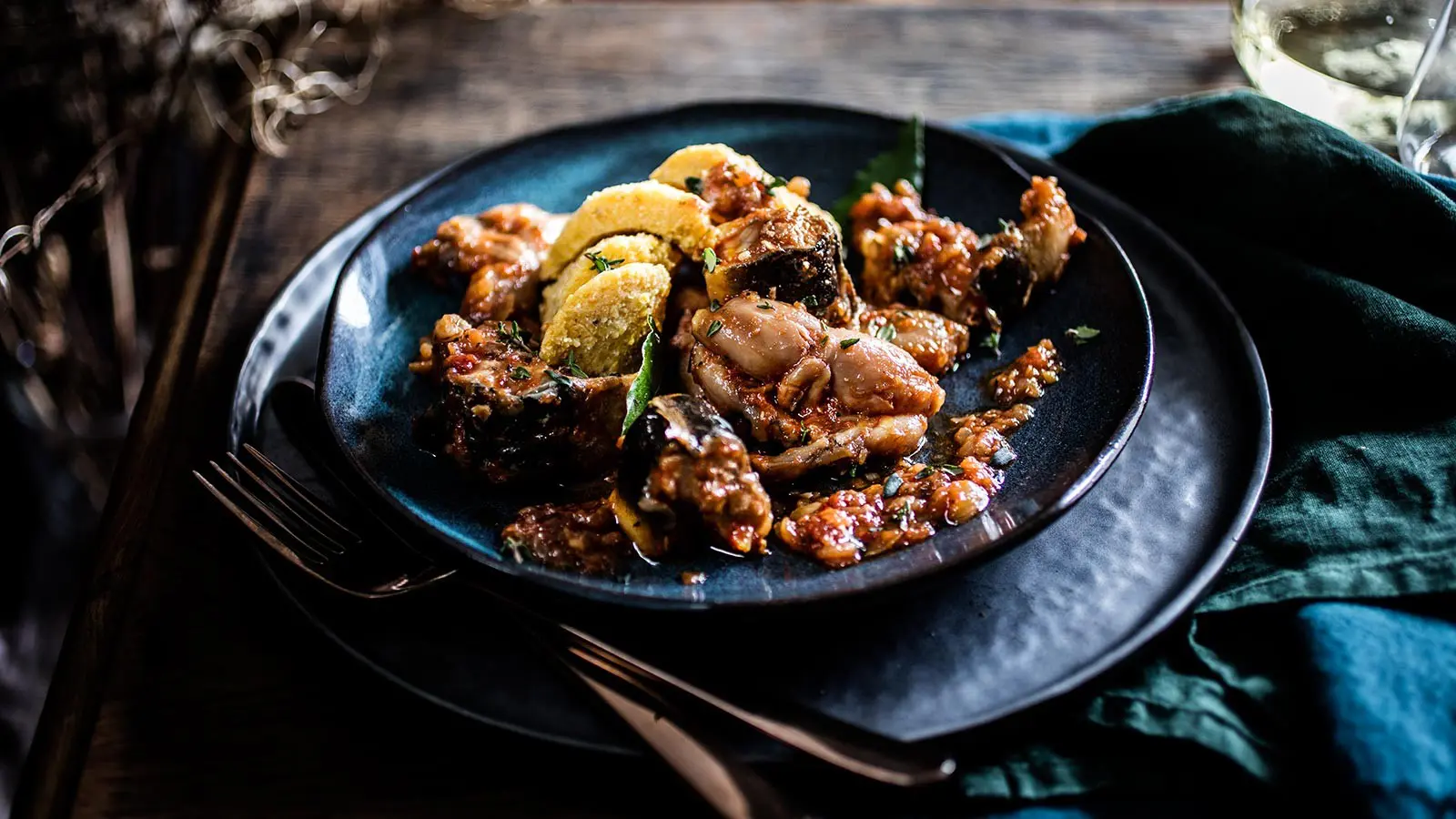
Popara
Popara is another type of fresh fish stew but not as spicy as Brodet. It’s very similar to a dish called Gregada, but Popara includes tomato sauce.
It can be made from one or various types of fish but they have to be fresh. Sea bass, dentex, or monkfish are all good choices. The main ingredients are olive oil, parsley, garlic, white wine, and potatoes cut into slices.
Buzara
Buzara is one of Dalmatia’s most loved specialties, with origins going back to the Venetian times. This popular dish got its name from the pot it was cooked in. Even though the pot is not used anymore, the name remains.
Buzara is common all over Dalmatia, but if you won’t be visiting any other coastal places or islands, Dubrovnik is the perfect place for it. Buzara can be done in two ways, with shrimp or mussels.
It’s quite a simple dish, made with fresh shellfish of your choice, plus olive oil, garlic, some salt and pepper, and a bit of local wine and parsley.
For white Buzara, don’t change anything from the original recipe. For red Buzara, add some tomatoes and maybe a splash of red wine. Whichever color you choose, it needs to be cooked slowly so the shellfish can release their seawater, giving an additional salty flavor.
The best part of Buzara – besides the seafood – is the sauce. You will need a lot of bread on the side to dip into that yummy sauce.
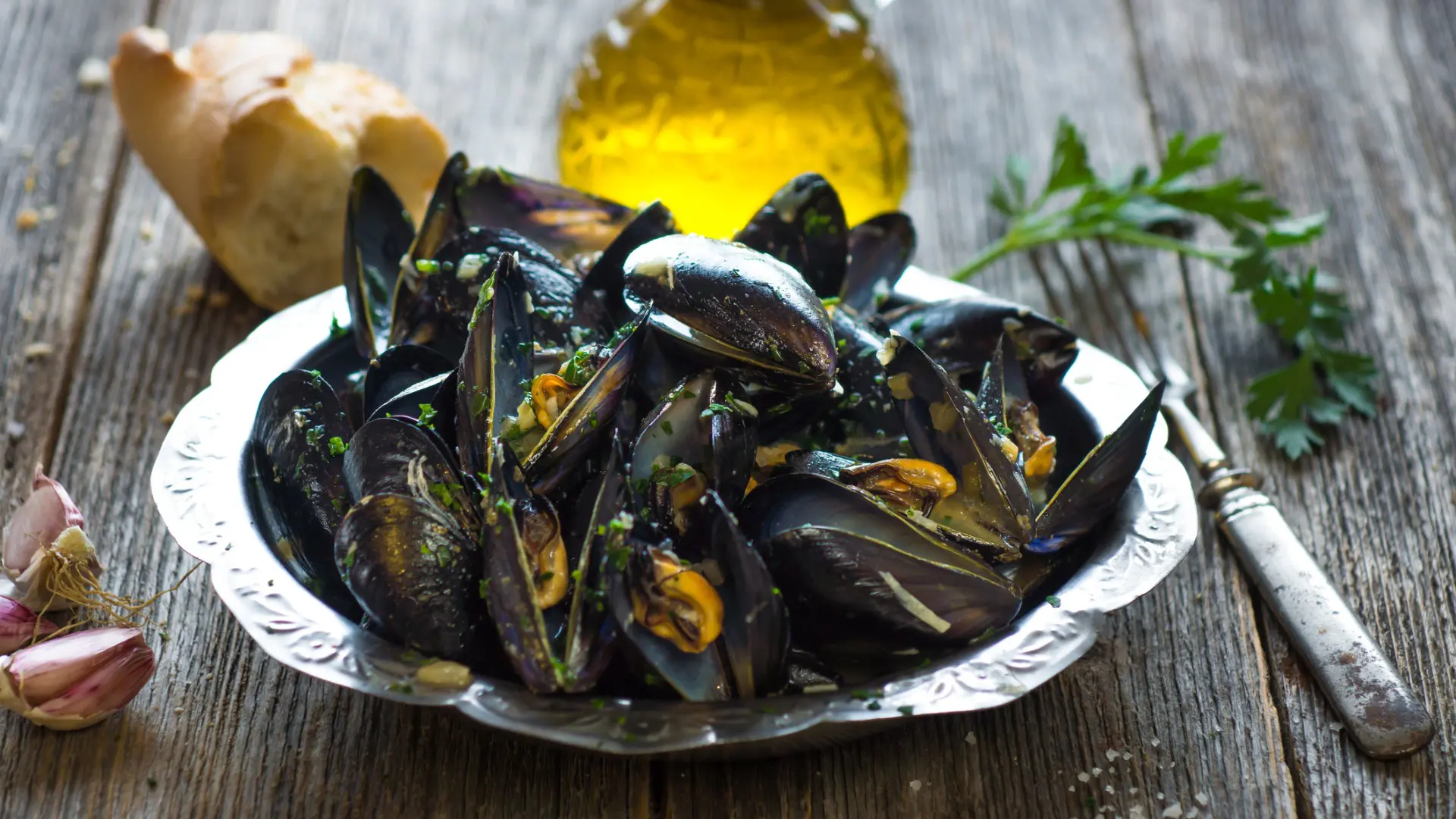
Dishes That Can Be Either Meat or Fish-Based
Peka is a traditional dish that can feature either meat or seafood – but never at the same time. Carpaccio and tartare, in either meat or fish variants, are crowd-pleasing appetizers.
Peka
Although this is a dish you can find anywhere in Croatia, why not taste it in Dubrovnik? Peka is cooked under an iron bell covered with coal. There are two popular versions in the area, lamb and veal, or octopus. They are both very good. Often found at countryside restaurants, Peka is a dish that usually needs to be preordered.
Your JayWay trip planner will make sure to add a Peka dinner with locals to your Dubrovnik itinerary, an experience that is consistently rated as the best meal of our guests’ trips.
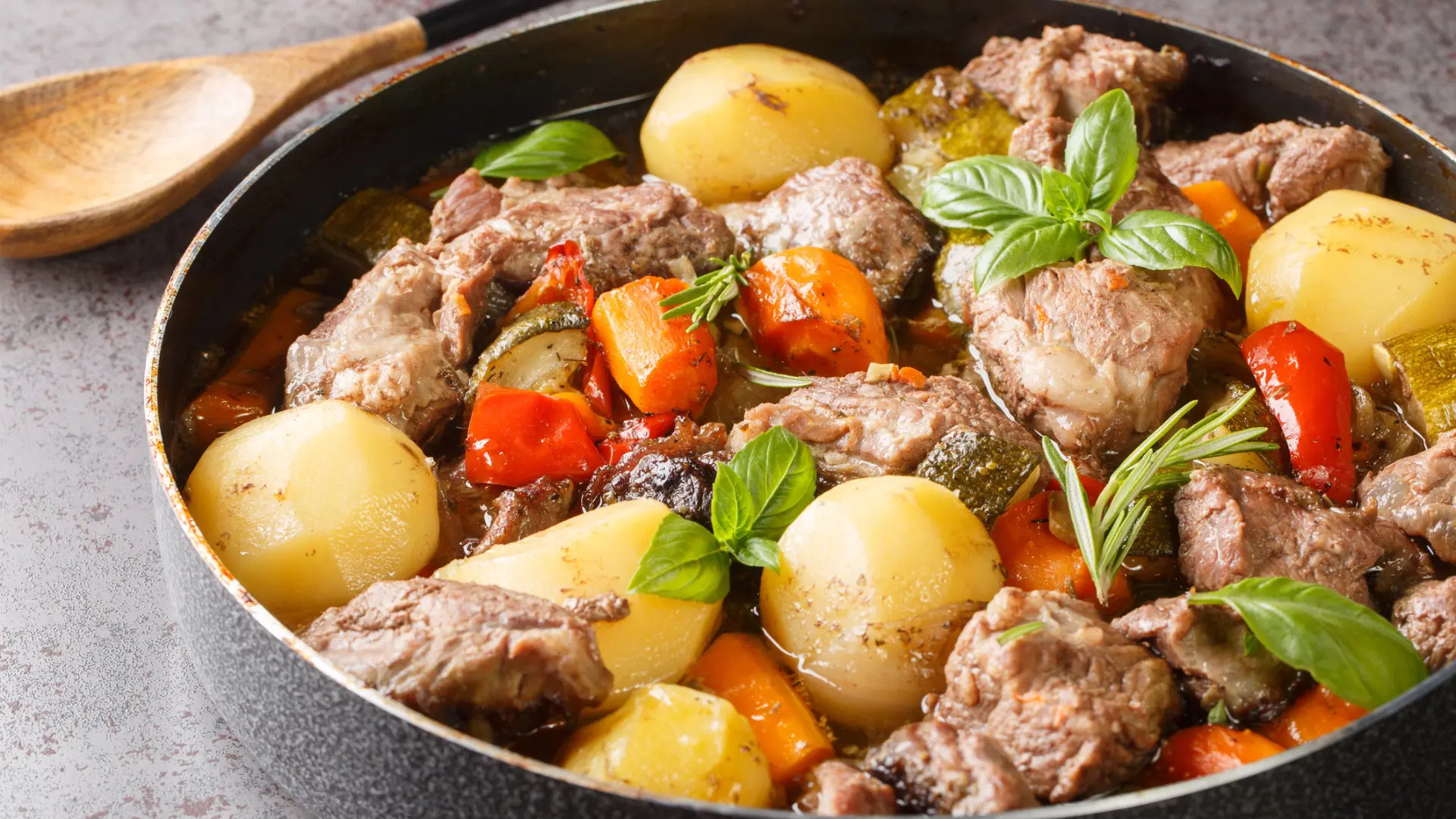
Carpaccio & Tartare
France might claim the steak tartare, but when you’re on the Dalmatian coast, you’d be remiss for passing up the opportunity for a tuna tartare, prepared raw from fresh-caught bluefin tuna from the Adriatic Sea.
The Queen of the Adriatic, Venice, invented the carpaccio: thinly sliced raw beef with a mayonnaise dressing. In the Pearl of the Adriatic, Dubrovnik, a tuna carpaccio is far more common. But tuna isn’t the only option. You’ll find other fish and seafood prepared this way, particularly sea bass and octopus.
In some of the best restaurants that focus on meat, beef carpaccio and tartare will be on offer, too.
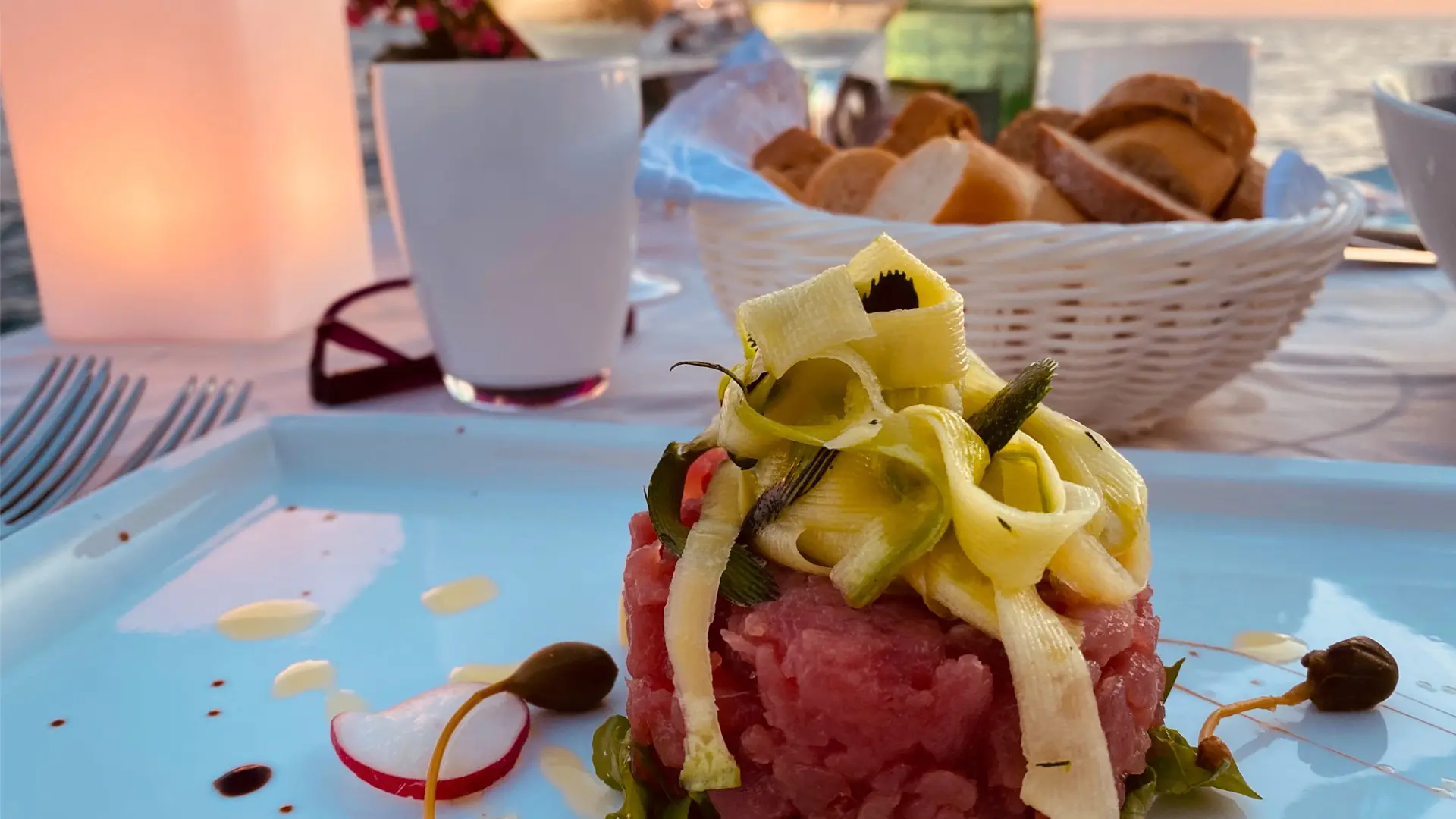
Meat Dishes
When you’re in Dubrovnik, with the waters of the Adriatic Sea lapping at the Old City walls, you might think you should be concentrating solely on the fresh seafood. Yet, there are many local specialties based on meat, traditional dishes with fascinating stories to tell.
Zelena Menestra (Green Menestra)
Zelena Menestra is traditionally a winter dish, but you can also enjoy it in other seasons. This dish dates back to the 15th century and has been proposed for inclusion on the UNESCO List of Intangible Heritage. In some parts of Dubrovnik, it is still a tradition to serve this dish for Christmas lunch.
Every year, there is an event in Konavle, near Dubrovnik, called The Scents of Christmas. During this event, locals organize various happenings, including a Menestra competition.
For this green stew, it’s important to have good cabbage and top-quality meat. Usually, Menestra is made with dried lamb, dried pork, bacon, pork head, or dry homemade sausages.
To bring the dish together, you first boil the meat of your choice in water. Then use that water to cook your cabbage, potatoes, and a little lard. Add a glass of red wine and that’s it.
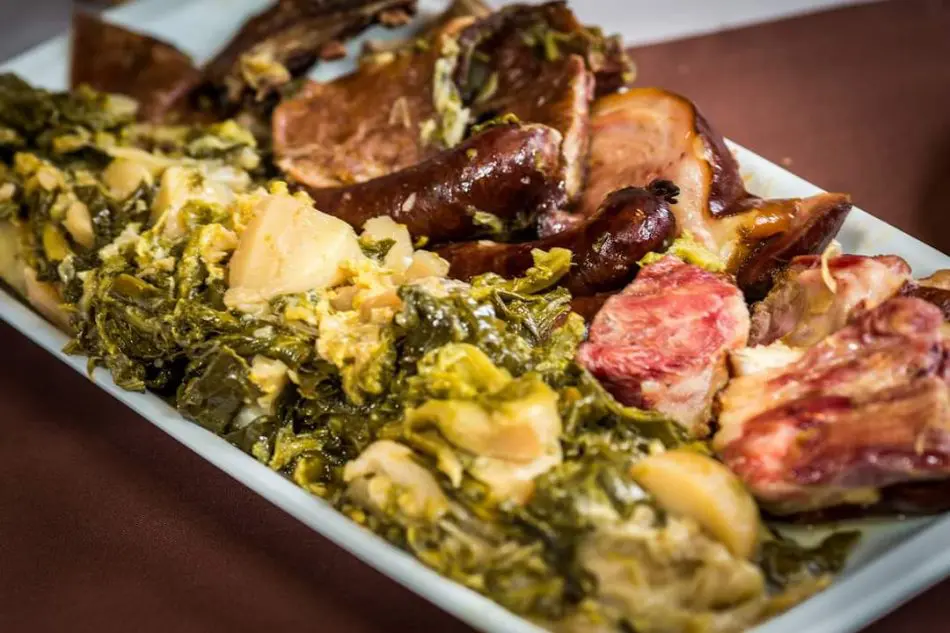
Kopun
Kopun is the Croatian word for a castrated rooster. The name comes from the Italian word Cappone, and it’s known as capon in English. Castrated roosters render softer meat with better taste and more fat, due to the lack of hormones.
This was a dish eaten in the times of the Dubrovnik Republic when peasants ate fish and the nobility indulged in the luxury of meat. Kopun was prepared on festive occasions. Throughout history, you’ll find mentions of capon being served in the royal courts of France, Italy, and of course, Croatia.
The dish itself was mentioned in the comedy Dundo Maroje by famous Dubrovnik playwright Marin Drzic in the 16th century. Restaurant Kopun in Dubrovnik’s Old City prepares their namesake dish according to that recipe, with orange and honey, serving it with barley, as it was back then.
Of course, there are some modern interpretations and these include potatoes or gnocchi, Kopun spreads, salads, soups, and similar. This dish is also known in the Zagorje region of northern Croatia, close to the border with Slovenia.
Pasta & Rice Dishes
Pasta and risotto aren’t just an Italian thing. With the intermingling of different recipes and ideas since the Roman times, you’ll find a lot of pasta and rice dishes throughout Croatia. So, if you’re wondering what to eat in Dubrovnik, pasta or rice can never be a bad idea.
Žrnovski Makaruni
This specialty comes from the island of Korcula, specifically from the little town of Zrnovo. Makaruni is a type of homemade pasta with a specific shape. It’s prepared by kneading dough and shaping it into pasta on a wooden stick, so it has a hole in the middle.
This fresh pasta is traditionally served with a meat sauce, which is made with beef, onions, and some secret spices.
Many years ago, women cooked whatever their men brought back from the sea. If the menfolk caught no fish, they would have to make do with what they had at home. As there was always flour in the kitchen, Makaruni became popular.
In the beginning, it was a necessity, but gradually, this became a dish made for special occasions. Every year, there is a Makarunada in Zrnovo – usually a charity event – where they prepare around 300 kilos of pasta.
Mljetski Makaruni
This pasta also comes from an island, this time Mljet Island. Similar to Zrnovski Makaruni, this dish came from a necessity back when people relied on the sea for their dinner. When the fish weren’t biting, women would work miracles with what they had lying around the kitchen.
Nowadays, what was once peasant food is considered a delicacy. The shape of this pasta is the same as Zrnovski noodles, but this is a vegetarian variation. It is simply dressed with a bit of olive oil, garlic, thyme, and grated goat cheese.
Black Risotto
Croatian Risotto is one of the country’s staple dishes. Although there are many variations, everyone’s favorite seems to be the famous Black Risotto.
Combining good quality rice and small cuttlefish from the Adriatic Sea, Black Risotto is a hearty dish you can try at most restaurants in Dubrovnik. The ink from the cuttlefish is what gives this dish its distinct color and self-explanatory name.
Other quality ingredients present in this dish include olive oil, garlic, parsley, fish stock, wine, cognac, vinegar, salt, pepper, and Mediterranean herbs, such as rosemary and thyme.
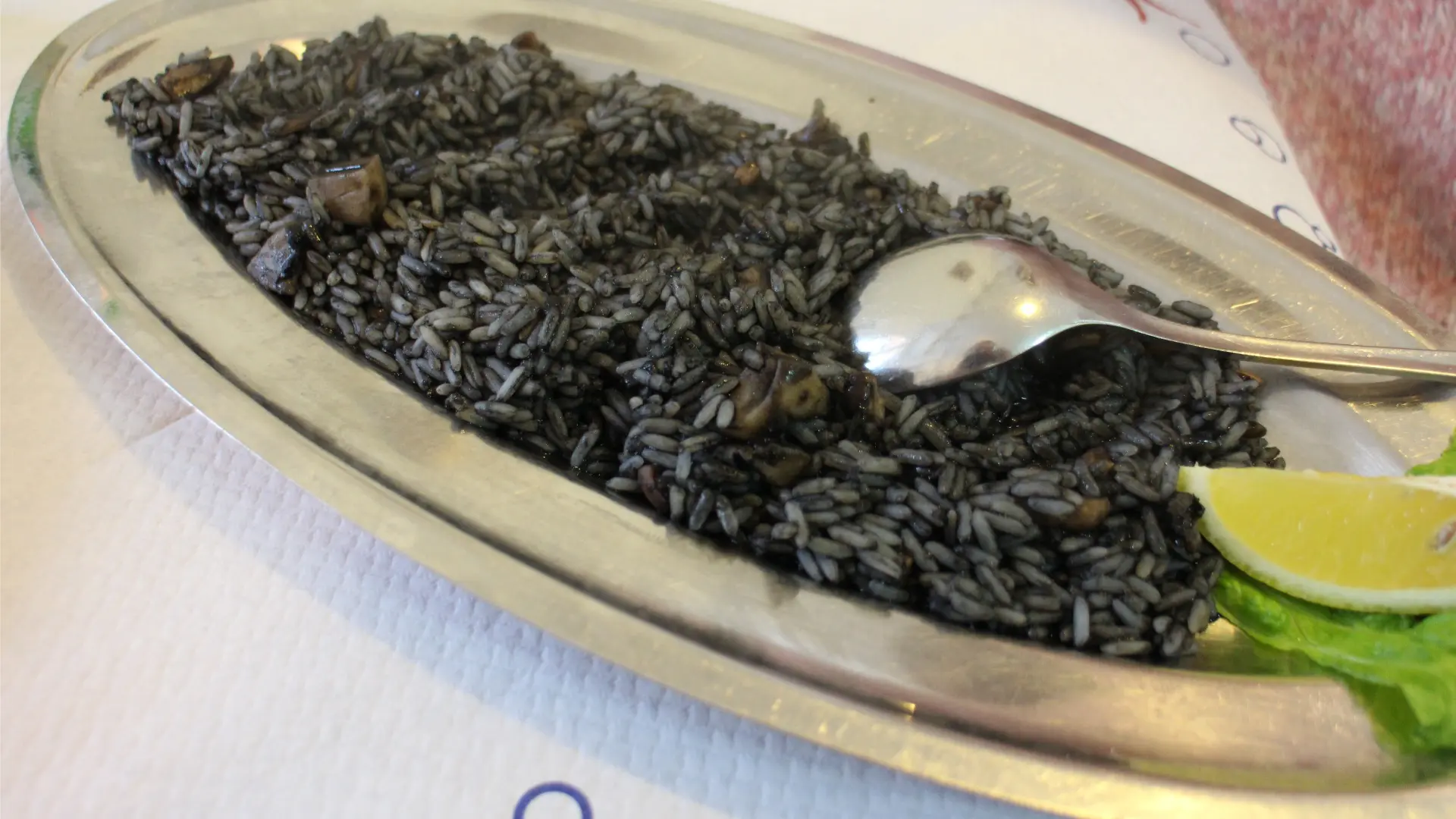
Dessert
If you’re wondering what to eat in Dubrovnik for dessert, the gorgeous coastal city and its surrounding areas won’t disappoint.
Kontonjata
Kontonjata is a traditional local sweet made from quince. Local housewives were always proud to display their Kontonjata at the table, traditionally served on a bed of bay leaves with walnuts on top. Still to this day, it’s a special occasion gift in certain areas of Croatia.
Kontonjata pairs well with rakija, a fruit brandy that is very popular in the Balkans. To make Kontonjata, first, the tough and sour quince needs to be cooked until softened and sweet. Then, it’s blended with sugar, and cooked for about two and a half hours while being constantly stirred.
Quince fruit naturally contains high amounts of pectin and starches. This means nothing else is required to turn this into a delicious jelly-like candy – besides a little bit of time and elbow grease. After it’s done cooking, it’s poured into molds to make different shapes, depending on the occasion.
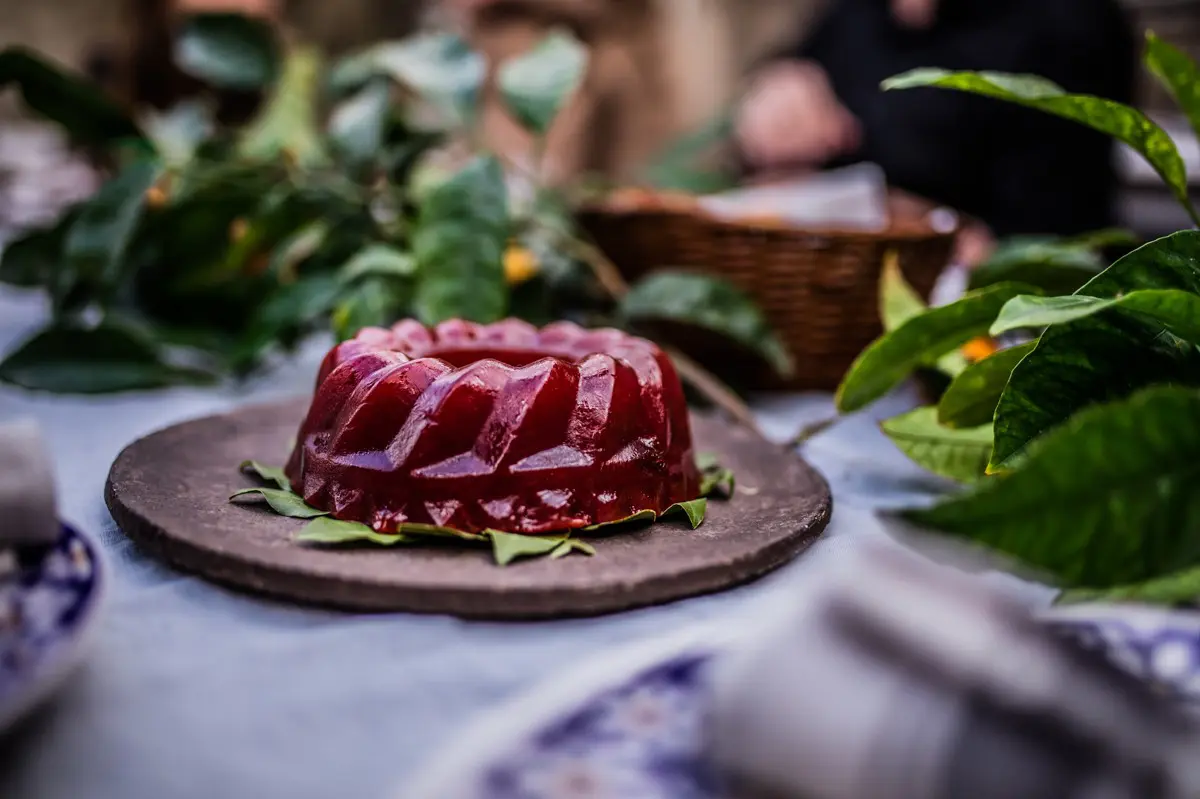
Mantala
Some people call this a cake, others call it a sweet snack. However you prefer to categorize Mantala, one thing is certain – this strange and acquired treat is a must-try while you are in Dubrovnik. Mantala originally comes from the Konavle area, in the southeastern part of Dubrovnik.
It’s made from grape must (red wine), flour, cloves, nutmeg, and cinnamon. To prepare this unique treat, you first boil the must with orange or lemon zest, add flour, and stir. But, don’t worry, it doesn’t need as much stirring as Kontonjata.
When the dough thickens a bit, you add the spices and some coarsely chopped almonds if you want. The mixture is poured into a wooden mold, lined on the inside with a damp cloth.
Historically, Mantala was prepared in the autumn – more specifically around the grape harvest when you can get must – and reserved for Christmas.
Arancini
You might have tried Arancini in Sicily, so prepare to be surprised. These are not Sicilian rice balls. In Croatia, Arancini is a sweet treat made usually from orange peel – hence the name – that pairs well with rakija or liquors.
In some restaurants (mostly taverns or those in the countryside) and Croatian homes, there is always a plate with mixed nuts, dried figs, and Arancini – sugared orange peel. Arancini can also be made from lemons. In both cases, you need to have thick-peeled fruit that’s not treated with pesticides.
The peel usually stays in the water for ten to twenty days to soften a bit. Afterward, you boil water with sugar until you get syrup, add your citrus peels that have been cut into small slices, and wait for them to soak in the syrup.
When done, you can also sprinkle with some sugar for a beautiful presentation and a bit of extra sweetness.
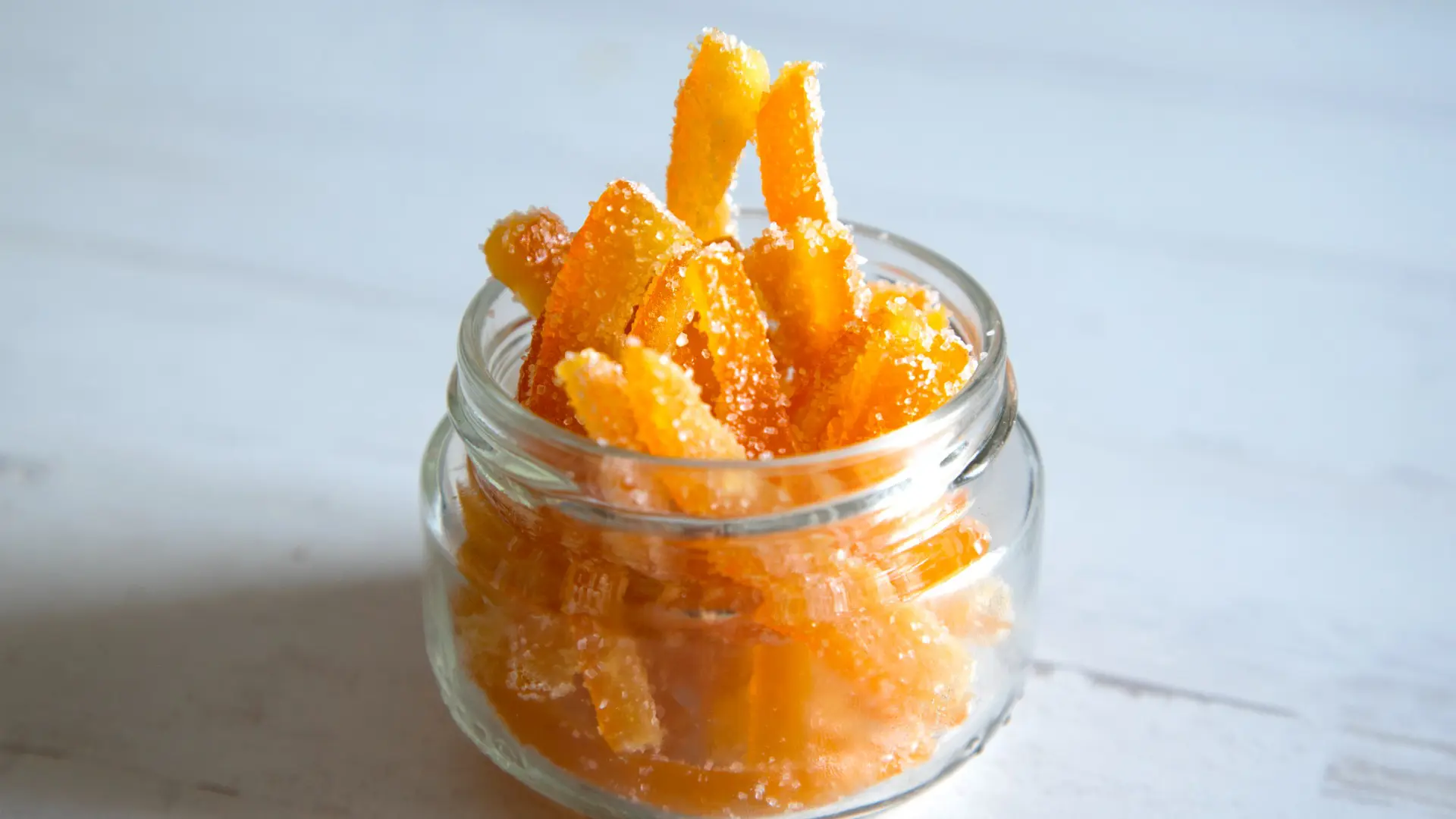
Rozata
Creme brulee, flan, creme caramel, panna cotta, or Rozata? Maybe you’ve never heard of Rozata, but you’ve surely heard of some of the others. As you might have guessed, Rozata is the Croatian cousin of the aforementioned creamy desserts, but of course with a slight twist.
The main ingredients are very simple and familiar – milk, eggs, and sugar. However, the original Dubrovnik Rozata has a special ingredient, Rozulin, which is a rose liquor.
It’s a very simple and popular dessert. Its special ingredient is the reason why Rozata was nominated for inclusion on the UNESCO List of Intangible Heritage.
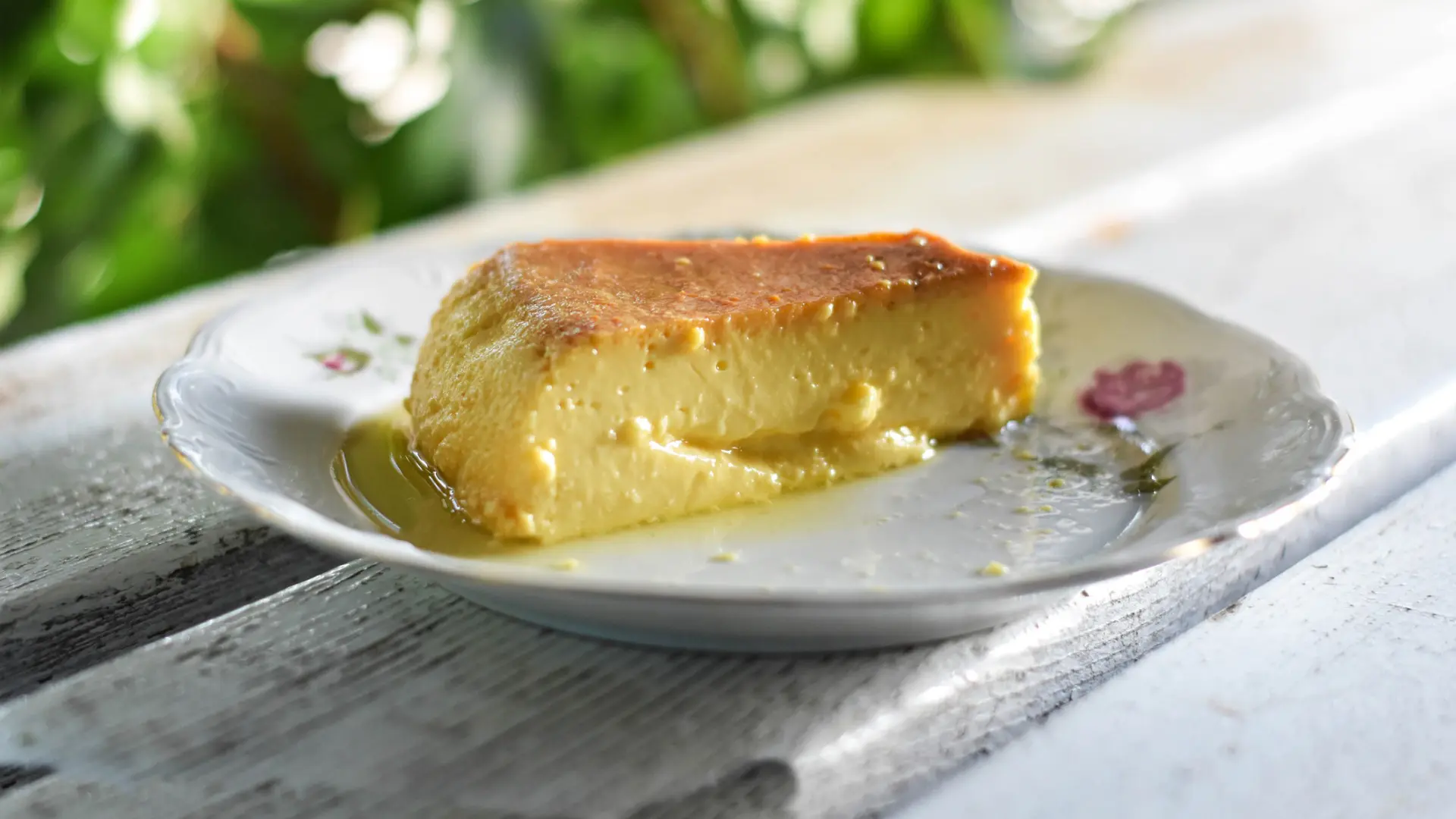
Stonska Torta (Ston Cake)
By now you’ve read about various kinds of traditional pasta and also different types of cakes, but did you ever think there would be a dish that combines the two? If the answer is No, we’ve got a surprise for you.
Stonska Torta is an unusual cake from the town of Ston, made with macaroni. This very original cake has a long tradition as a dessert for special occasions, like Christmas, Easter, and weddings. Now you can find it in nearly every restaurant in Ston, as well as Dubrovnik if you’re lucky. Trust us, it’s a must-try dessert.
Cukarin
Cukarin is a type of cookie from the island of Korcula. As there is no mold for shaping the cookies, each is truly unique.
A Cukarin is quite a large cookie, with two long pieces coming together in the center – like two snakes holding a heart. Cukarin is believed to date back to the Venetian times when it was thought that snakes brought good luck.
Like many Croatian desserts, Cukarin is made with love and simple ingredients. Mix together sugar, eggs, flour, and a bit of lemon and orange, knead and shape into your snakes, bake, and you have Cukarin cookies. The best way to eat them is by dunking them into sweet dessert wine.
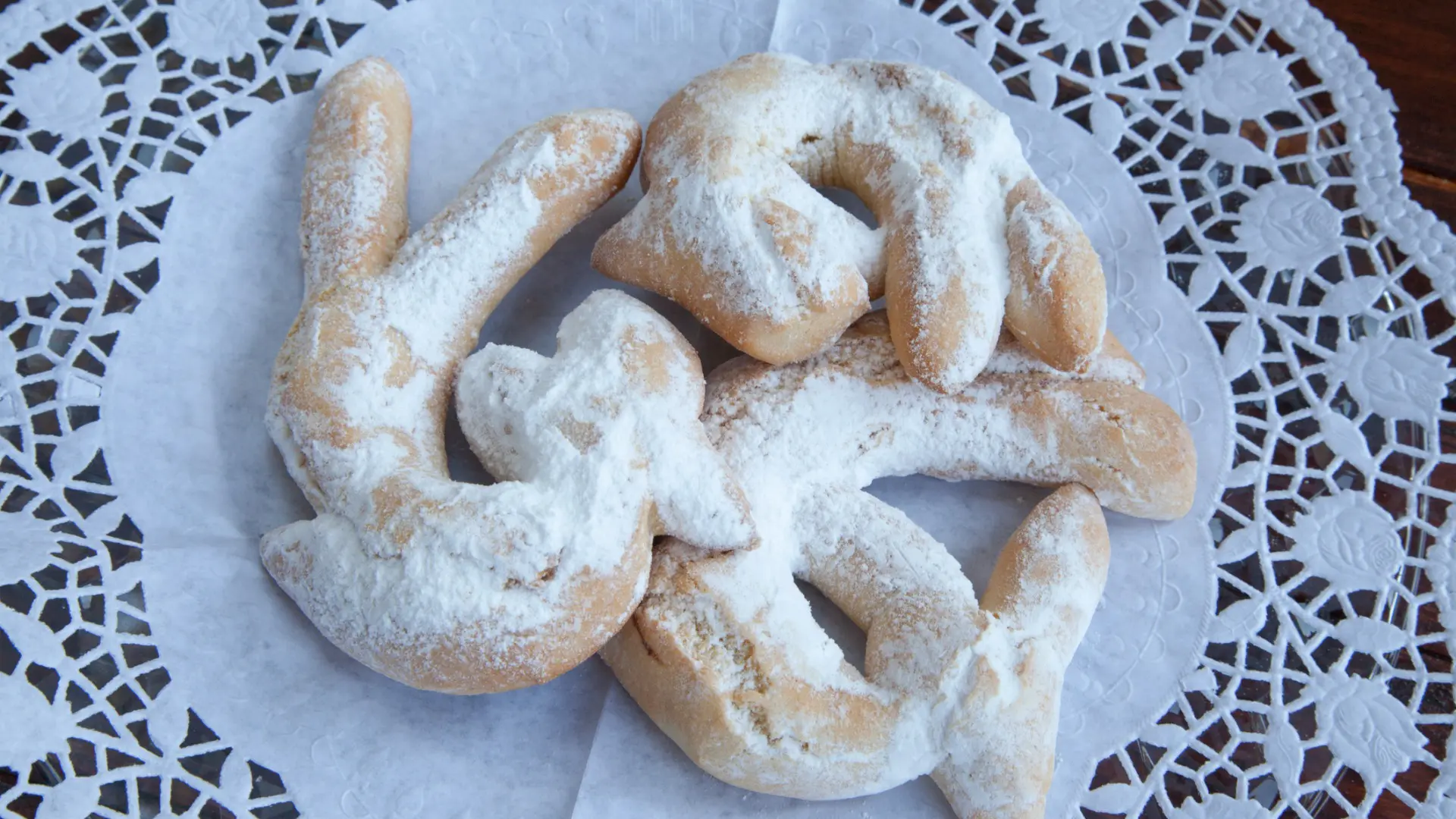
Klašun
This is another sweet delicacy from Korcula that is over 100 years old. Klasun is an interesting cookie full of flavors, combining unusual local ingredients like ammonium bicarbonate and rose liquor. This crescent-shaped cookie is filled with almonds, orange zest, fig, and orange marmalade.
Nowadays, baking powder is used instead of ammonia, but there are still some locals who stick to the original recipe. They say the traditional way smells awful when baked but it doesn’t affect the amazing flavor.
Lumblija
The inhabitants of Korcula must really have a sweet tooth because this traditional dessert also has its roots on this island in Southern Dalmatia. This might be our most unique listing yet – keep reading to find out why.
Lumblija is a sweet bread that comes from the tiny town of Blato. If you happen to pass by this town during your Croatia vacation, it’s a must. This delicious treat is full of flavors and spices. It packs in almonds, walnuts, orange, lemon, grape must, raisins, cinnamon, and cloves.
The story behind this cake’s name is quite interesting. During Napoleon’s time, a young French soldier fell in love with a local girl on the island. But, at a certain point, he had to bid au revoir to Croatia and go back home. Upon his departure, he did the most French thing and baked his love a special bread.
As he was leaving, he asked her not to forget him, N’oubliez Pas in French. Croatians aren’t known for their keen ear for the French language, and the poor girl understood that he said Lumblija and this is how the bread got the name.
Because of this tragic love story, Lumblija is traditionally made around All Saints Day/Day of the Dead, when we remember the ones that we miss who are no longer with us.
Try The Best Food in Dubrovnik With JayWay
Now that you know what to eat in Dubrovnik, you must be eager to sample all the gastronomic goodness that awaits in Dubrovnik and around. Our expert trip planners can craft for you the perfect culinary journey through Croatia or a scenic trip across Southern Dalmatia.
If you have a sweet tooth, an itinerary that features Korcula and other islands is your best shot at trying mouthwatering local desserts, alongside delicious food. No matter what you decide, we’re only an email or phone call away.

Ivana came to JayWay with plenty of experience in tourism, alongside a degree in Tourism and Marketing. Although she worked with several big British tour operators over the years, Ivana found that working with big group tours wasn’t for her, since she preferred to get to know the people she was working for, and devote time to them, so JayWay was a perfect fit. Ivana naturally loves to travel, and is a big foodie, but she especially loves to read a good book, and enjoy excellent Croatian wine.